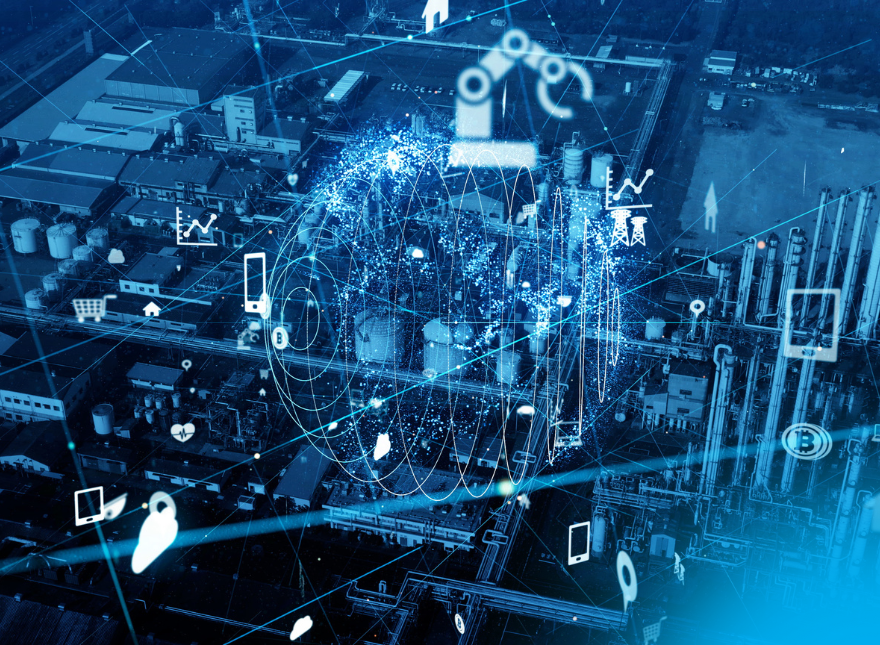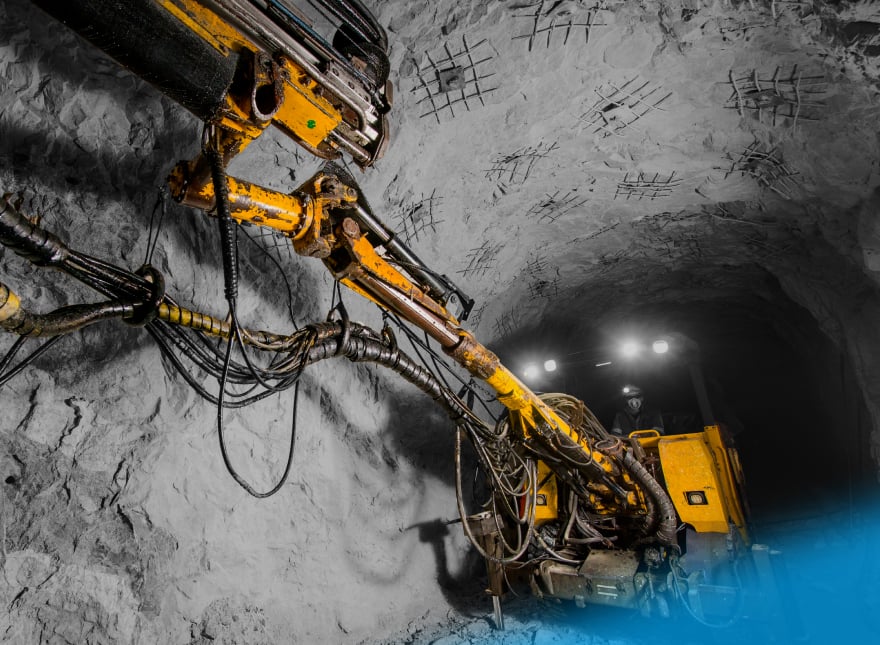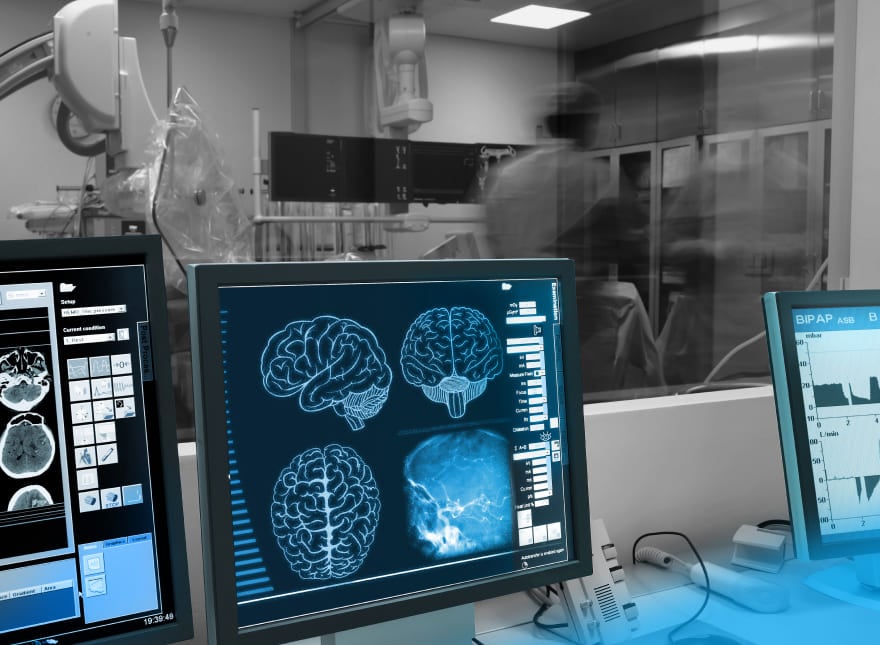Zooming in on Strategic Technology Trends for 2021
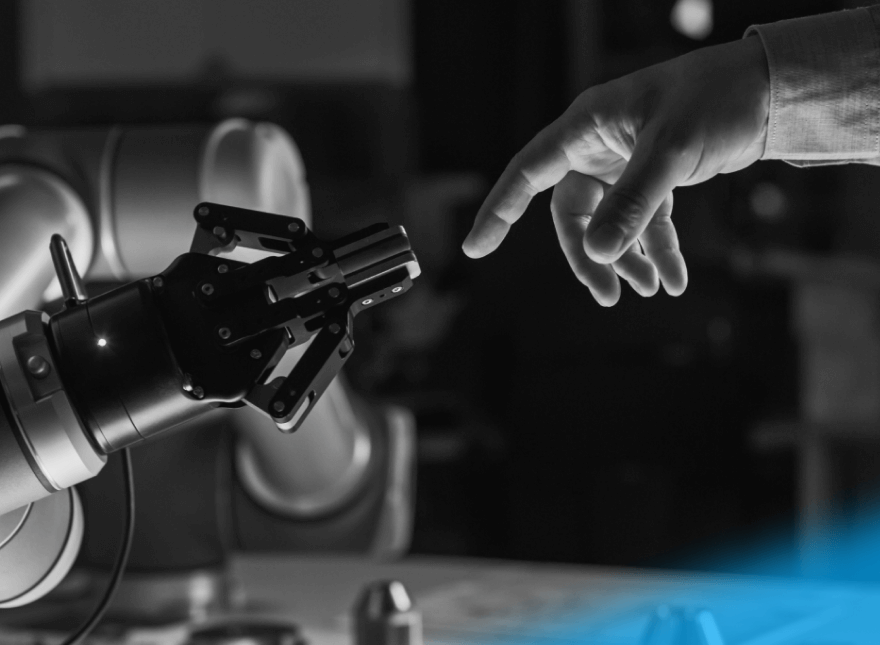
2020 was a chaotic year that forced many companies to shift to remote work, revamp business strategies, and even rebuild their services and solutions to stay afloat. Abrupt digitalization has already shortened the average lifespan of a company to less than 20 years (down from 60 years in the 1950s).
Some businesses have had to close their doors forever. Others adapted and even mustered higher revenue thanks to resilience, flexibility, and integrating revolutionary technologies like AI and computer vision, mixed reality, and robotics.
With this turbulent year coming to a close, we've decided to analyze the top technology trends that defined 2020 and predict the future of technology for 2021.
Table of Contents
- Trend 1. Technology is King, Transformation is a Must
- Trend 2. Cloud Computing and Shifting Data Processing towards the Edge
- Trend 3. Gathering Insights with the Internet of Behavior
- Trend 4. Zero Trust with Cybersecurity Mesh
- Trend 5. Flexibility and Resilience
- Trend 6. Stronger Regulation of the Tech Industry
- Trend 7. Diversity not Only in Words but Also in Deed
- A Final Note
Trend 1. Technology is King, Transformation is a Must
Tech solutions don't play supportive roles in businesses anymore—they’re now vital ingredients in companies' strategies. The era of disruption requires companies to keep up with the latest trends in technology and transform to survive. Adopting robotics or augmented reality can support business objectives in many ways—satisfy the target audience, increase team efficiency, or expand the business to new markets. The task for companies in 2021 is to incorporate tech components into the existing business strategy if this hasn’t already been done.
The global pandemic transformed customer habits and seriously revamped the tech space. In particular, these IT sectors did well in 2020 and can help businesses achieve their digital transformation goals:
- Teleconferencing. Video conferencing apps gained tremendous popularity as soon as companies switched to remote work. Downloads of Slack and Microsoft Teams skyrocketed. Zoom became the number one video conferencing tool, registering $777.2 million in revenue during the third quarter of 2020, which is four times higher than a year ago. The global video conferencing market is projected to hit $8.56 billion by 2027, expanding at a 9.9% CAGR from 2020 to 2027, according to Grand View Research.
- E-learning. This sector saw a boom because of the rising demand for e-learning solutions among students and corporates. Online e-learning platforms, virtual classrooms, and corporate MOOCs are helping various groups of people to connect distantly during the pandemic. As a result, platforms such as Seneca, ClassIn, and Century registered a spectacular increase in usage in 2020. DreamBox Learning, offering video game style math lessons, went from 3 million to 5 million student users. What about the future? According to a Global Market Insights study, the e-learning market size is expected to reach $375 billion by 2026 growing at an 8% CAGR.
- Delivery services. Social distancing and lockdowns brought a surge in demand for delivery services. Amazon, DoorDash, and Uber Eats became the most popular food delivery services for US consumers during the pandemic. Services like Uber Eats and EatStreet allow customers to choose whether they want to interact with couriers. China even started using drones to deliver medical samples and consumer items.
- Telehealth. Without human-to-human contact, telehealth solutions became necessary tools for treating non-COVID patients and monitoring people with mild symptoms. Use cases include solutions for managing people with chronic diseases (for instance, smart blood pressure monitors) and post-surgery patient monitors, and apps for physical therapy and remote psychiatrist consultations. In 2020, the number of US consumers replacing doctor visits with telehealth quadrupled (from 11% to 46%). This market is predicted to see a remarkable growth rate of 40% through 2023, hitting $194.05 billion.
Looking into the future, we can safely say that the year 2021 will force companies to accelerate digitalization, using emerging technologies. These technologies will likely include:
a) AIoT. This trend involves the combination of AI and IoT: internet-connected solutions generate significant volumes of data, and AI technologies help devices to understand user behavior and perform human-like tasks.
Smart surveillance, autonomous vehicles, and security access devices are just a few examples of AIoT in action. Tech giants like Amazon, Apple, and Google already augment the internet of things solutions with artificial intelligence techniques: Alexa, Siri, and Google Assistant are well-known examples in this market segment. The blend of AI and IoT is also winning in transportation, retail analytics, and robotics.
Forrester highlights the growing need for ethical and responsible use of artificial intelligence. Researchers predict that companies adopting machine learning and other AI techniques will pay more attention to trust, transparency, and ethical impact and will choose technology partners who share similar principles and values.
b) Self-piloted drones. Drones bring benefits to multiple industries, such as oil and gas, construction, and agriculture. Drones help oil and gas companies monitor miles of pipelines, track progress on construction sites, and assist agronomists by performing human tasks like planting, watering, and monitoring crops. Experts predict that the drone industry will reach $1.5 trillion by 2040.
Buzzwords for 2021
According to a CompTIA trend report, the top technology trends for 2021 that will shape the technology landscape include:
- Extended reality, which comprises the adoption of AR and VR solutions
- Robotic process automation that includes the use of ML and NLP techniques
- 5G as the next generation of cellular networking
- No-code and low-code application development, which means rapid engineering with less technical skills
- Ambient computing solutions that involve sensors, natural language processing techniques, and wearables integrated into people’s daily lives
- Social engineering that exploits human psychology for cyberattacks rather than technical hacking techniques
- Green digital products that prioritize a minimal impact on the environment
Trend 2. Cloud Computing and Shifting Data Processing towards the Edge
According to a Forrester report, the increasing role of cloud-native technologies in business innovation is one of the trends that will force businesses to accelerate digitalization in the upcoming year. Cloud services will remain the key driver of the digital transformation industry. This global market size is predicted to grow from $469.8 billion in 2020 to $1,009.8 billion by 2025 at a 16.5% CAGR, according to a Research and Markets report.
Cloud technology became an underlying tech stack for any type of IT solution, from mobile apps to smart devices. Integration of cloud components brings multiple benefits such as mobility (access to data from anywhere in the world), as well as the possibility to back up and restore data and expand storage capacity not to mention significant cost savings when compared to maintaining expensive systems and equipment.
Simultaneously, cloud computing has its limitations when measured against a more reliable alternative—edge computing. In particular, cloud technology operates well with a limited number of devices, while connected devices exponentially invade the market. A surge of new technologies like 5G will usher in a new era of massive data exchange. Statista predicts 75 billion IoT devices to be installed worldwide in 2025—a threefold increase over 2019 figures. Simultaneously, processing large amounts of data in the cloud requires significant investment.
Edge computing means building a distributed, decentralized network architecture. A smart combination of edge computing and AI technologies allows data generated by devices to be processed locally or on the nearest server by using AI algorithms. Vivid examples of AI-enabled edge devices are smart speakers, automotive systems, drones, and security cameras. By 2022, 90% of industrial enterprises will process data via edge computing, according to a Frost & Sullivan study.
“Over the next three to five years, firms will shift their cloud strategy to include more edge services from more vendors, challenging public cloud vendor market dominance.” - Forrester predicts.
Trend 3. Gathering Insights with the Internet of Behavior
The Internet of Behavior (IoB), which combines technology, data analytics, and behavioral science, is one of the emerging trends to watch next year. According to Gartner, half of the world’s population will be involved in at least one IoB program by the end of 2025.
The IoB approach enables companies to gather insights about user preferences and behavior through solutions that focus on individual experiences like location tracking and facial recognition. This data helps create targeted advertising, improve messaging strategies, and introduce new products and services. An example of the typical IoB solution is an athlete wearing smart apparel that measures heart rate, daily step count, and calories burned.
The Internet of Behavior enhances businesses in many ways.
For example, IoB solutions can be a viable alternative to customer surveys. By analyzing the data acquired through wearable devices, smart digital signage, and mobile applications, brands can make smarter predictions about customer preference like dietary choices and travel destinations to uncover employees' behavioral patterns.
It's helpful to reveal the user behavior, which significantly changes in social distancing and self-isolation, and use these patterns to recast strategies—for instance, shifting from fingerprint scanners to facial recognition tools for building access control.
Trend 4. Zero Trust with Cybersecurity Mesh
The use of internet-connected devices comes with the risk of cyberattacks and security breaches. A user has protected access to any digital environment with a cybersecurity mesh, which includes organizing a flexible, scalable, and reliable security control.
This trend involves a zero trust framework, which literally means “never trust but always verify” and requires users to authorize, authentify, and continuously validate their access rights. Multifactor authentication is one of the technologies behind this approach.
Machine learning algorithms and data analysis techniques help cybersecurity software vendors to reveal security risks and prevent systems from falling victim to attacks. The number of cyberattacks will increase along with the exponentially growing volume of data and available data sets, and it will require new investments and skills. AI in the cybersecurity market is expected to hit $38.2 billion by 2026 with a CAGR of 23.3%.
Trend 5. Flexibility and Resilience
In 2020, the term "work from home" became a forced buzzword—in the upcoming year, teams will learn how to handle working remotely as an option, not a must. According to Gartner, companies must be ready to make operations and support customers everywhere. Flexibility (the ability to adapt the workflow to any changes) and resilience (resistance to disruptions) are two crucial qualities for organizations in 2021 and beyond. Forrester also predicts the improved capability of large enterprises to operate hyperlocally in the next decade.
Harvard Business Review highlighted key principles of resilient organizations that help them stay in the game for a long time, which include:
- Redundancy buffer systems (for instance, multiple factories that produce the same product)
- Stuff diversity, which requires businesses to hire people from different backgrounds and ways of working and thinking—this ensures that the system won’t fail drastically
- Adaptability that includes growing through trial and error, scaling up viable ideas, opting for flexibility and learning instead of stability and rigidity
- Modularity that means an organisation consisting of individual elements—if some cells collapse, the whole system will still survive
If we talk about professionals individually, companies, when hiring, will focus on business skills along with professional skills. Robust communication capabilities, the ability to create a presentation or organize a team, is now a must not only for HR or marketing specialists but also for techies.
Trend 6. Stronger Regulation of the Tech Industry
The question of regulating the tech industry has been discussed in the US for years and it will definitely be one of the top technology trends in business next year. Over the last years, the government started paying more attention to potential harm to the public through various IT solutions. It includes multiple DDoS attacks that simultaneously infect thousands of home routers or IP cameras with malware, highjacking of poorly secured IoT devices, and online fraud, scams, and security breaches that came about during the pandemic.
Until then, businesses have to stay informed about both federal mandates and local regulations, which may affect how data can be used and in what way. In particular, the Louisiana Act 117-Senate Bill 273 forces managed service providers that work for public bodies to register with Louisiana state authorities and report all cyberattacks. Individual states like Illinois, Washington, and Texas established a legal framework and obligated companies to obtain consent when collecting personal biometric data, exclude biometric identifiers if necessary, and securely store the information. Moreover, companies working in the EU market must comply with the GDPR regulations.
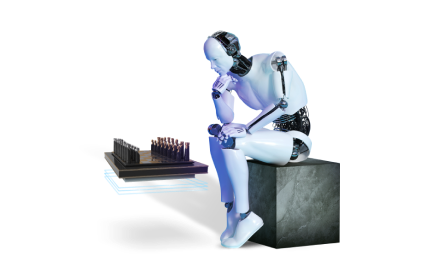
Trend 7. Diversity not Only in Words but Also in Deed
Studies prove that all genders are equally good at computing, but women in STEM careers remain around 24% while they make up almost 50% of the overall workforce. According to the US Bureau of Labor Statistics, the unemployment rate for Black Americans stood at nearly 11 percent as of November 2020, versus 6 percent for white Americans. 2021 will introduce a new approach to both gender and racial equity. Organizations that paid lip service to social responsibility are very likely to put their money where their mouths are.
Companies can demonstrate equal opportunities for all groups within the workforce (improve diversity) and also in terms of their products and services. One example is the response of tech giants to the killing of George Floyd and the following nationwide protests. Amazon, IBM, and Microsoft paused selling their facial recognition software to law enforcement agencies for mass surveillance. Earlier, the lack of accuracy in AI algorithms triggered concerns about the ethical use of facial recognition technology.
A Final Note
Although the tech sector fared better than many other industries during the pandemic, the world of uncertainty and digital acceleration brought new challenges. Some of the top enterprise technology trends like hyper automation, cloud computing, and AI development will continue into 2021. Others, which appeared as a response to the COVID-19 pandemic changed user habits and forced companies to reshape their strategies to keep their heads above water. Overall, the top tech trends to watch in 2021—from the spread of the Internet of Behavior solutions to cybersecurity mesh—cover three main topics, according to Gartner:
- People centricity (a user with a need for digitalized processes is the center for businesses)
- Resilient delivery (the ability to pivot and adapt in times of instability)
- Location independence (technology is made to support employees, customers, and suppliers no matter their physical location)
More articles on the topic

